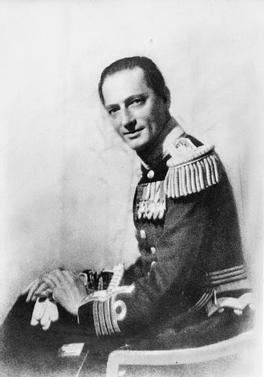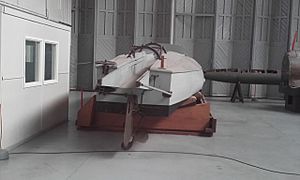Augustus Agar facts for kids
Quick facts for kids
Augustus Agar
|
|
|---|---|
 |
|
| Nickname(s) | Gus |
| Born | 4 January 1890 Kandy, British Ceylon |
| Died | 30 December 1968 (aged 78) Alton, Hampshire, England |
| Allegiance | United Kingdom |
| Service/ |
Royal Navy |
| Years of service | 1905–1946 |
| Rank | Commodore |
| Commands held | HMS Witch (1926–27) HMS Scarborough (1930–33) HMS Curlew (1936) HMS Emerald (1937–39) Royal Naval College, Greenwich (1939) HMS Emerald (1939–40) HMS Malcolm (1940) HMS Dorsetshire (1941–42) Royal Naval College, Greenwich (1943–46) |
| Battles/wars | First World War |
| Awards | Victoria Cross Distinguished Service Order Mentioned in Despatches |
| Other work | Younger Brother of Trinity House (1936) Conservative Parliamentary candidate for Greenwich (1945) Vice President Sailors' Home and Red Ensign Club (1957) Published: Footprints in the Sea (1959); Showing the Flag (1962); Baltic Episode (1963) |
Augustus Willington Shelton Agar, often called "Gus", was a brave officer in the Royal Navy. He served in both the First World War and the Second World War. He is famous for receiving the Victoria Cross, which is the highest award for bravery in the face of the enemy. He earned this award for sinking a Soviet ship during the Russian Civil War.
Agar was known for being very brave and dedicated to his country and the Royal Navy.
Contents
Augustus Agar was born in Kandy, British Ceylon (now Sri Lanka), on January 4, 1890. His father was a tea planter from Ireland. When he was eight, he went to school in England.
After his father passed away, his older brother decided that Gus should join the Navy. Gus agreed and prepared for the naval entrance exams. In 1904, he joined the naval cadet school, HMS Britannia, in Dartmouth.
As part of his training, Agar sailed on cruisers like HMS Highflyer and HMS Isis (1896) (HMS Isis). He learned a lot about handling small boats, which helped him later in his career. In 1910, he became an acting sub-lieutenant. He was promoted to lieutenant in 1912.
Before World War I, Agar also learned to fly, though he had a few crashes! He became an expert in gunnery.
Serving in the First World War
Joining the Grand Fleet
When the First World War started in August 1914, Agar was on the battleship HMS Hibernia. His ship joined Admiral Sir John Jellicoe's Grand Fleet, which was Britain's main battle fleet.
Fighting at Gallipoli
In 1915, Hibernia was sent to the Dardanelles to support Allied troops fighting in the Gallipoli Campaign. The ship helped by firing its guns at Turkish targets. After the Allies left Gallipoli, Hibernia returned to Britain to guard against German raids.
Missions in North Russia
Later in the war, Agar joined HMS Iphigenia, an old cruiser used as a repair ship. They went to Murmansk and Archangel in North Russia. Their job was to help British merchant ships that were bringing supplies to Russia.
This was a difficult and sometimes dangerous mission. Agar saw the start of the Russian Revolution and witnessed the breakdown of order on Russian ships. This experience taught him a lot.
Coastal Motor Boats
Towards the end of the war, Agar served on Coastal Motor Boats (CMBs). These were small, fast boats that carried torpedoes. They could operate very close to shore.
Agar took part in the famous Zeebrugge Raid, where CMBs created smoke screens to help other ships. He also attacked German patrol boats along the Belgian coast.
Bravery in the Russian Civil War
After World War I, Agar was asked to go on a secret mission in the Baltic Sea. He would use CMBs to help British agents in Bolshevik Russia. His small boats were perfect for landing on enemy shores and escaping quickly.
Agar set up a base in Finland, near the Soviet border. From there, he went on a top-secret mission to rescue Paul Dukes, a British spy. To do this, Agar's boats had to cross dangerous minefields and pass by forts and ships guarding the Russian naval base at Kronstadt.
Agar felt his small force should do more than just ferry agents. He decided to attack the Bolshevik ships at Kronstadt.

On June 17, 1919, Agar took his boat, HM Coastal Motor Boat 4, into the bay. He managed to sink a Russian cruiser, the Oleg. For this incredible act of bravery, he was awarded the Victoria Cross and promoted to lieutenant commander.
Later, on August 18, 1919, Agar led a group of CMBs into Kronstadt harbour. This time, they damaged two battleships and sank a submarine support ship. For his part in this action, Agar received the DSO. The British naval presence in the Baltic was very important in helping Estonia and Latvia gain their independence.
Between the World Wars
After his adventures in the Baltic, Agar married Mary Petre in 1920. He held several commands at sea. He served in New Zealand, commanding HMS Chatham and HMS Philomel. These were happy years for him.
From 1924 to 1925, Agar was the captain of the Royal Yacht HMY Victoria and Albert for King George V.
In 1926, he commanded the 4th Destroyer Flotilla in the Mediterranean. He later married Ina Margaret Lindner in Bermuda in the 1930s.
He also commanded the anti-aircraft cruiser HMS Curlew and his favorite ship, the fast light cruiser HMS Emerald. He commanded Emerald from 1937 to 1939, serving in the East Indies.
World War II Service
Carrying Gold and Convoy Duty
When World War II began in September 1939, Agar was again commanding HMS Emerald. His ship was soon given a top-secret mission: to carry two million pounds in gold bars from the Bank of England to Canada. This gold was used to pay for war supplies from America.
The voyage was very rough, with heavy seas. Emerald lost some equipment due to the storms. After delivering the gold, Emerald was assigned to escort convoys across the North Atlantic. This was dangerous work, protecting merchant ships from German U-boats. The crew, who had been dressed for warm climates, received warm gear from the Canadian Red Cross.
Operation Lucid
In September 1940, Agar was in charge of Operation Lucid. This was a plan to attack German invasion barges in France with fire ships. The goal was to stop Germany's plans to invade Britain.
Agar made several attempts, but bad weather or mechanical problems with the old oil tankers he was using forced them to turn back. On the last attempt, Agar's command ship hit a mine and was badly damaged. The operation was eventually called off.
Coastal Forces and HMS Dorsetshire
Agar then became chief staff officer for Coastal Forces. He worked to improve Britain's defenses against German attacks on coastal convoys.
In August 1941, Agar took command of the heavy cruiser HMS Dorsetshire. This ship was designed to find and destroy enemy ships that were attacking merchant vessels. Dorsetshire was sent to the South Atlantic to protect Allied trade. She helped sink a German supply ship called Python.
Fighting in the Indian Ocean
In December 1941, the Japanese attacked Pearl Harbor, and soon after, British positions in Asia. Dorsetshire was immediately sent to escort convoys of troops and civilians in the Indian Ocean. This was vital work, as these convoys were now at risk from both German and Japanese ships.
Agar's ship helped evacuate civilians from Singapore and troops from Burma before those areas fell to the Japanese.
The Sinking of HMS Dorsetshire
In April 1942, while Dorsetshire was undergoing repairs in Colombo, Ceylon, news arrived that a large Japanese fleet was heading towards the island. Agar quickly prepared his ship for sea.
On April 5, Easter Sunday, Japanese aircraft attacked Colombo. Agar's ship, along with HMS Cornwall, was spotted by Japanese planes. At 1:00 PM, Japanese dive bombers attacked. Dorsetshire was hit by 10 bombs and sank in just eight minutes.
Out of 734 men, 234 were killed. Agar worked hard to save his crew, helping the wounded and giving calm advice. He was wounded in the leg and swallowed oil, which affected his health for the rest of his life. After 32 hours in the water, the survivors were rescued.
Later Life
After recovering from his injuries, Agar supervised the building of the new aircraft carrier HMS Unicorn. In 1943, he was promoted to commodore and became the president and captain of the Royal Naval College, Greenwich. He served there until 1946.
In his retirement, Augustus Agar wrote two books about his naval career. He also farmed strawberries in Alton, Hampshire, England.
Augustus Agar passed away on December 30, 1968. His Victoria Cross and telescope are on display at the Imperial War Museum, London. His famous boat, HM Coastal Motor Boat 4, can be seen at the Imperial War Museum Duxford.
See Also
Images for kids



